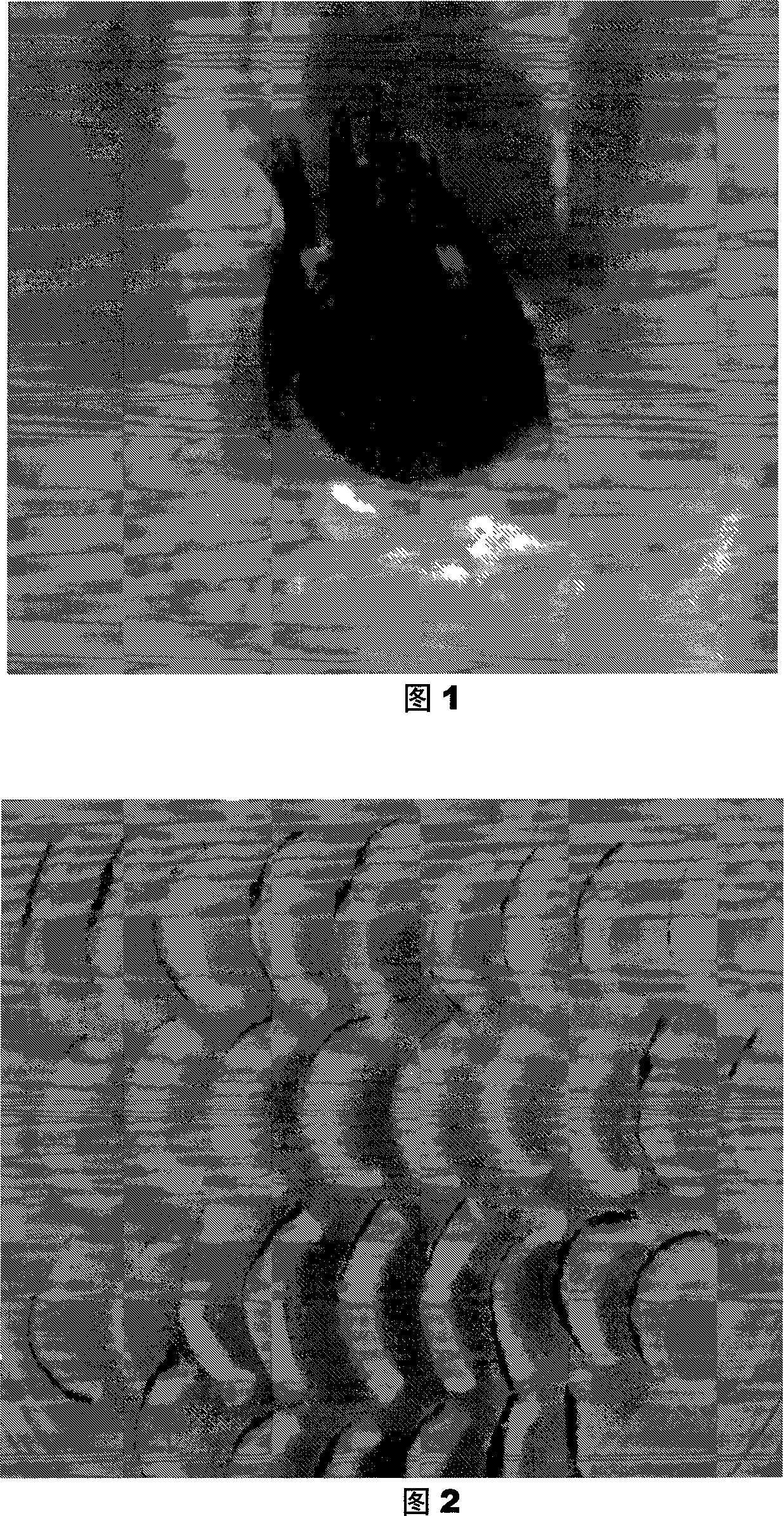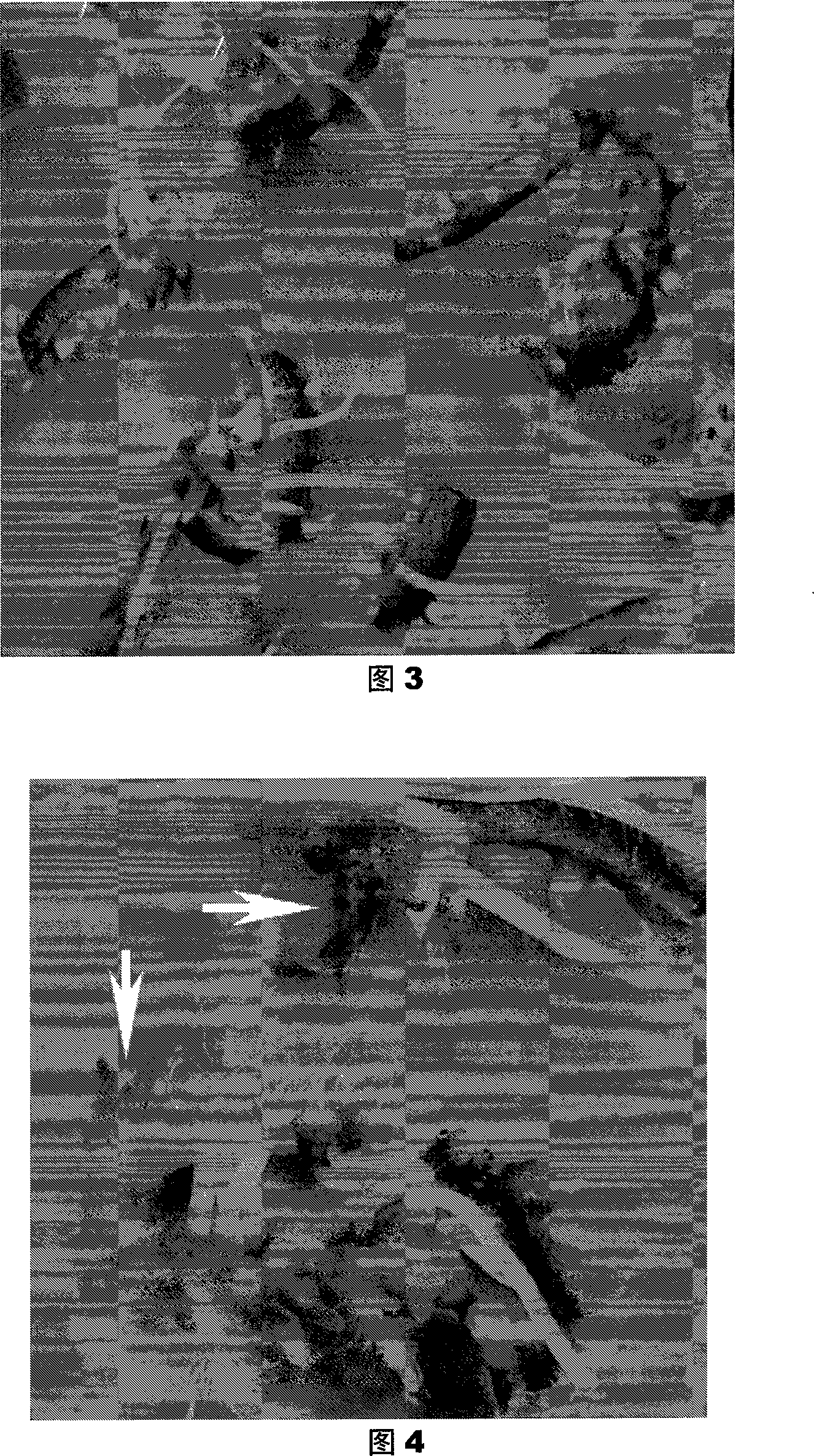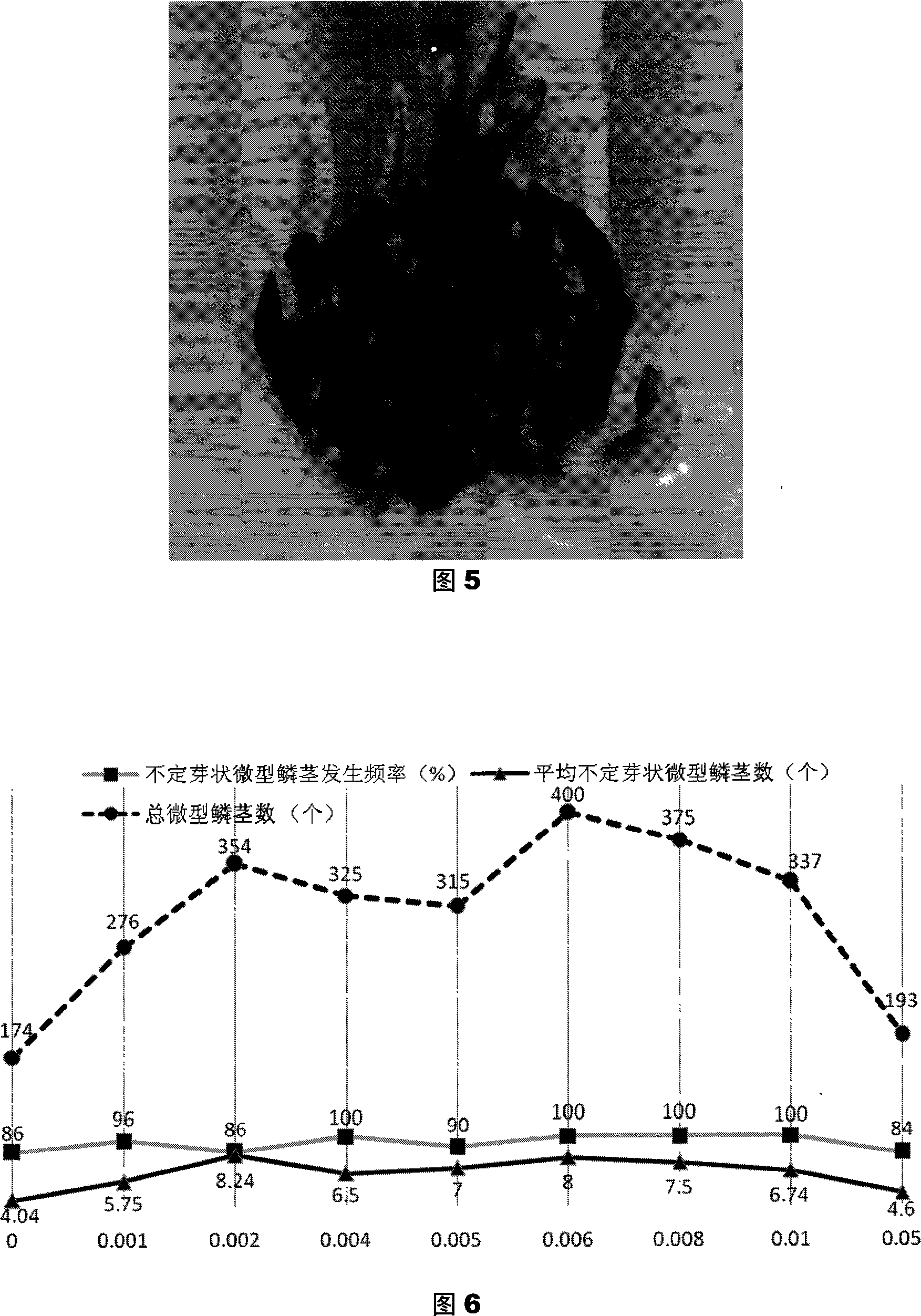Siberia lily detoxification test tube plantlet squama bulb highly-efficient regeneration method
A high-efficiency regeneration, test-tube seedling technology, applied in the field of tissue culture in biological science, can solve problems such as the differentiation of indefinite bud-like microbulbs in longitudinal slices without scales, and achieve the effect of improving efficiency and reproduction coefficient.
- Summary
- Abstract
- Description
- Claims
- Application Information
AI Technical Summary
Problems solved by technology
Method used
Image
Examples
Embodiment 1
[0045] Select a test tube bulb with a diameter of 1 to 1.5 cm, peel off the outer 1 to 3 layers of scales, and use a sharp knife to cut the scales into thin slices with a thickness of 1 to 2 mm under sterile conditions, and each scale can obtain 6 to 8 pieces on average. The scales are sliced longitudinally, and the shape of the slices is shown in Figure 2.
Embodiment 2
[0047] In the induction medium, the effect of 2,4-D addition concentration on the differentiation of adventitious bud-like microbulbs in the longitudinal slices of scales is shown in Table 1.
[0048] Table 1 The effect of 2,4-D concentration on the differentiation of adventitious bud-like microbulbs in longitudinal slices of scales
[0049]
[0050] The longitudinal slices of the scales were inoculated on the induction medium for five days and gradually turned green. Ten days later, buds appeared at the base, and the epidermis of the adaxial and abaxial surfaces were slightly callused. Bud points appeared in the slightly callused epidermis in 12 days, and complete adventitious bud-shaped miniature bulbs were formed in 15 days. Table 1 shows that when the dosage of TDZ is 0.005mg / L, the average number of adventitious bud-like microbulbs increases with the increase of the dosage of 2,4-D, the maximum is at 0.5mg / L, and then gradually decreases. The occurrence freque...
Embodiment 3
[0052] In the induction medium, the effects of different concentrations of TDZ on the differentiation of adventitious bud-like microbulbs from scale longitudinal sections are shown in Table 2 and Figure 6.
[0053] Table 2 Effects of different concentrations of TDZ on differentiation of adventitious bud-like microbulbs in longitudinal slices of scales
[0054]
TDZ concentration
(mg / L)
Inoculation outside
Number of implants
(indivual)
Regenerated Adventitious Bud Micro
Bulb explant number
(indivual)
adventitious bud-like microscale
stem frequency
(%)
average adventitious bud
number of miniature bulbs
(indivual)
total microbulbs
number
(indivual)
0
0.001
50
50
43
48
86
96
4.04
5.75
173
276
[0055] 0.002
0.004
0.005
0.006
0.008
0.01
0.05
50
50
50
50
50
50
50
43 ...
PUM
| Property | Measurement | Unit |
|---|---|---|
| thickness | aaaaa | aaaaa |
Abstract
Description
Claims
Application Information
 Login to View More
Login to View More - Generate Ideas
- Intellectual Property
- Life Sciences
- Materials
- Tech Scout
- Unparalleled Data Quality
- Higher Quality Content
- 60% Fewer Hallucinations
Browse by: Latest US Patents, China's latest patents, Technical Efficacy Thesaurus, Application Domain, Technology Topic, Popular Technical Reports.
© 2025 PatSnap. All rights reserved.Legal|Privacy policy|Modern Slavery Act Transparency Statement|Sitemap|About US| Contact US: help@patsnap.com



